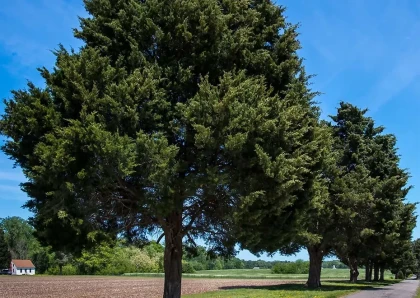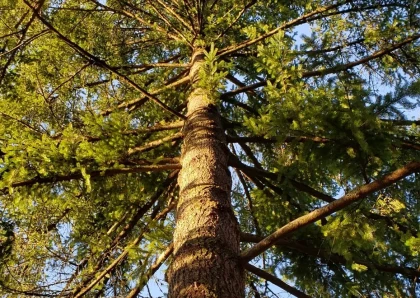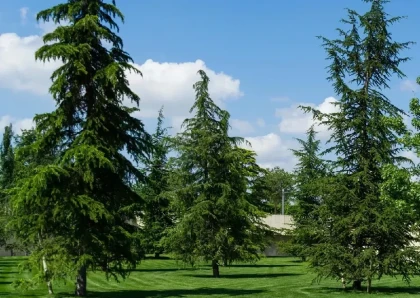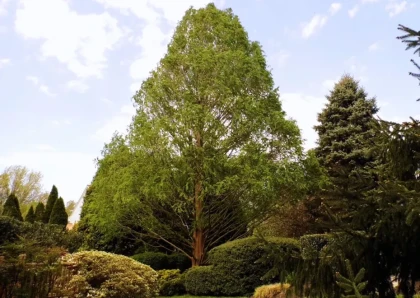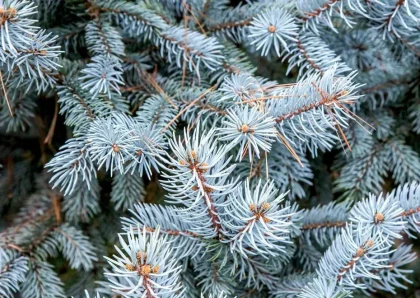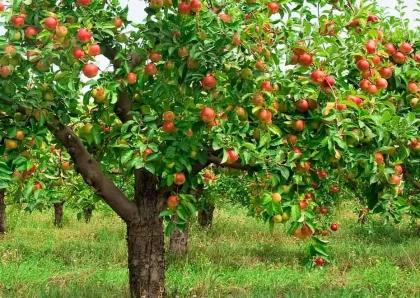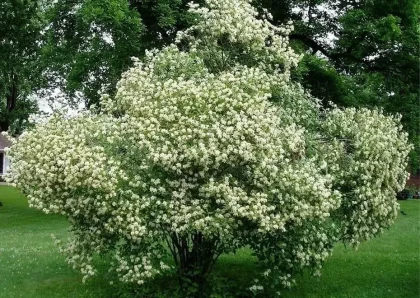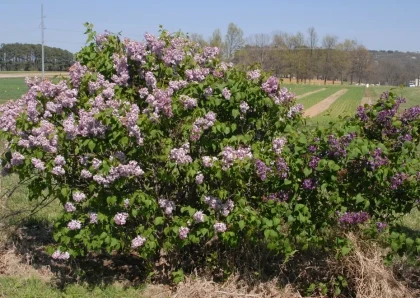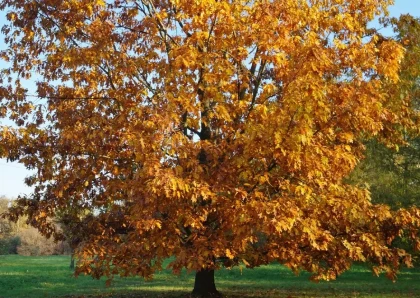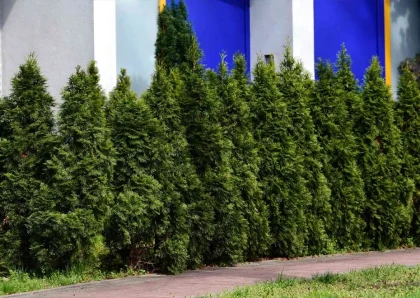
American Beech Tree
Overview
American Beech Tree
The American Beech (Fagus grandifolia) is a deciduous tree native to eastern North America, including the United States and parts of Canada. It is a member of the Fagaceae family and is one of the most common and iconic trees in the eastern forests of North America.
Appearance
The American Beech is a large tree that can grow up to 70 to 100 feet (21 to 30 meters) tall and may have a spread of 50 to 70 feet (15 to 21 meters). It has a straight, smooth, and grayish-brown bark that is quite distinctive. The leaves are simple, alternate, and elliptical in shape with wavy edges, and they typically measure 2 to 5 inches (5 to 13 centimeters) in length. In the fall, the leaves turn a beautiful golden-bronze color.
Reproduction
The tree produces nuts, known as beechnuts or mast, which are triangular and encased in a spiky bur. These beechnuts are an important food source for various wildlife, including birds, mammals, and insects.
Habitat
American Beech trees thrive in a variety of habitats, including mixed hardwood forests, bottomlands, and upland woods. They are often found growing alongside other hardwoods like oaks and maples.
Lifespan
American Beech trees are long-lived and can survive for several centuries, with some specimens estimated to be over 300 years old.
Importance
The American Beech has ecological significance as it provides food and shelter for a wide range of wildlife species. It also helps stabilize soil with its strong root system and contributes to the overall biodiversity of its habitat.
Threats
American Beech trees have faced challenges from various pests and diseases, including beech bark disease caused by a combination of a scale insect and a fungus. Climate change, habitat loss, and human activities also pose threats to their populations.
Conservation
Conservation efforts are in place to protect American Beech trees and their habitats. Certain areas may have regulations in place to limit the movement of firewood and other materials that can spread pests and diseases.
Different types of wood products can be made from American Beech Tree
The wood of the American Beech tree is highly valued for its strength, hardness, and attractive appearance. It is used in the manufacturing of various wood products, including:
- Furniture: American Beech wood is commonly used in crafting furniture, such as chairs, tables, cabinets, and dressers. Its light color and fine, straight grain make it popular for both traditional and modern furniture designs.
- Flooring: The durable and hard nature of American Beech wood makes it suitable for flooring applications. It can be used for both solid hardwood flooring and engineered wood flooring.
- Cabinetry: The wood's fine texture and ability to take stains and finishes well make it a preferred choice for cabinetry in kitchens, bathrooms, and other interior spaces.
- Millwork: American Beech wood is used in various millwork applications, including moldings, window frames, doors, and trim work.
- Panels and Plywood: The wood can be used to produce panels and plywood for various construction and woodworking purposes.
- Tool Handles: American Beech wood's hardness and shock resistance make it suitable for crafting tool handles, such as hammers, mallets, and chisels.
- Wooden Toys: The wood is safe, non-toxic, and appealing, making it a good choice for crafting children's toys and games.
- Turned Items: American Beech wood's fine-grained nature makes it suitable for turning on a lathe, creating items like bowls, vases, and decorative pieces.
- Charcoal: Beech wood is used in charcoal production, which has various industrial and domestic applications.
The versatility and appealing properties of American Beech wood make it a sought-after material in woodworking and various industries.
Benefits of American Beech Tree
-
Environmental Benefits
The American Beech tree offers several environmental advantages, such as:
- Carbon Sequestration: Beech trees, like other trees, help mitigate climate change by absorbing carbon dioxide during photosynthesis and storing it as carbon in their biomass.
- Soil Erosion Control: The extensive root system of beech trees helps stabilize soil, reducing erosion and preventing soil runoff into waterways.
- Air Purification: Through their leaves, beech trees help improve air quality by filtering pollutants and particulates, thus contributing to cleaner air.
- Microclimate Regulation: Large stands of beech trees can create microclimates, providing shade and moderating temperatures in their immediate vicinity.
-
Wildlife Benefits
American Beech trees support various forms of wildlife, offering essential habitat and food sources, including:
- Wildlife Shelter: The dense canopy and sturdy branches of beech trees provide shelter for birds, mammals, and insects, offering protection from predators and harsh weather.
- Food Source: The tree's beechnuts are a valuable food resource for many wildlife species, including birds like turkeys, woodpeckers, and jays, as well as mammals like squirrels, deer, and bears.
- Biodiversity Support: Beech forests contribute to overall biodiversity, providing homes for numerous plant and animal species, enriching the ecosystem.
-
Human Benefits
The American Beech tree also benefits human populations in various ways, including:
- Wood Products: The strong and attractive wood of the beech tree is used in furniture, flooring, cabinetry, and other woodworking applications.
- Recreational Value: Beech forests offer recreational opportunities, such as hiking, birdwatching, and nature appreciation, contributing to the well-being and quality of life for people.
- Education and Research: Beech trees play a role in ecological studies, providing insights into forest ecosystems and contributing to scientific research.
- Aesthetics and Landscaping: American Beech trees are valued for their beauty and are often planted in parks, gardens, and urban landscapes, enhancing the visual appeal of these areas.
Cons of American Beech Tree
-
Susceptibility to Beech Bark Disease
One significant concern for American Beech trees is their vulnerability to beech bark disease, a combination of a scale insect and a fungus. This disease can lead to significant damage and mortality of beech trees, impacting their health and overall population.
-
Slow Growth
American Beech trees are known for their slow growth rate. It may take a long time for young beech trees to mature and reach their full size, which can be a drawback for those seeking fast-growing trees for certain purposes or applications.
-
Heavy Beechnut Mast Periods
While the beechnuts produced by the American Beech tree are an important food source for wildlife, heavy mast periods (years with abundant nut production) can lead to an overabundance of beech seedlings. This can create competition for other tree species and impact forest dynamics.
-
Shade-Tolerance Can Suppress Understory Growth
Beech trees are shade-tolerant, which means they can grow and thrive in the understory of forests. However, their dense canopy can also suppress the growth of other understory vegetation, affecting the diversity of plant species in the forest ecosystem.
-
Low Resistance to Certain Pests and Environmental Stressors
While American Beech trees are generally healthy, they may have lower resistance to some pests and environmental stressors compared to other tree species. This susceptibility can make them more vulnerable to damage during certain disease outbreaks or adverse environmental conditions.
Planting Tips for American Beech Tree
-
Choose the Right Location
Select a planting site with well-draining soil and adequate sunlight. American Beech trees prefer moist, loamy soil and can tolerate some shade but generally thrive in full sun.
-
Planting Time
Plant the American Beech tree in the spring or fall when the soil is not frozen, and temperatures are moderate. This allows the tree to establish its root system before facing harsh weather conditions.
-
Planting Depth
Dig a hole that is as deep as the root ball but two to three times wider. Avoid planting the tree too deeply, as it can lead to root suffocation.
-
Mulch and Watering
Apply a layer of organic mulch around the base of the tree to conserve soil moisture and suppress weed growth. Water the tree regularly during the first growing season to help it establish its root system.
-
Staking (if necessary)
Young American Beech trees might benefit from staking to provide support against strong winds and ensure they grow straight. Use soft ties to secure the tree to the stakes, leaving enough room for movement.
Maintenance Tips
-
Watering
After the initial establishment period, American Beech trees are relatively drought-tolerant. However, during extended dry periods, especially in the first few years after planting, provide supplemental watering to keep the tree healthy and hydrated.
-
Pruning
American Beech trees generally require minimal pruning, primarily for removing dead, damaged, or diseased branches. Prune during the dormant season to avoid stress to the tree and reduce the risk of disease transmission.
-
Mulching
Replenish the mulch around the tree periodically, but avoid piling mulch against the trunk, as it can lead to moisture retention and potential rot issues.
-
Pest and Disease Management
Regularly inspect the tree for signs of pests or diseases. If issues are detected, consult with a professional arborist to determine the appropriate course of action for management and treatment.
-
Protection from Mechanical Damage
Be mindful of potential mechanical damage from lawn equipment, vehicles, or construction. Provide physical barriers or warning signs to protect the tree from accidental harm.
Conclusion
The American Beech (Fagus grandifolia) is a magnificent and ecologically significant deciduous tree native to eastern North America. With its tall stature, attractive golden-bronze fall foliage, and smooth grayish-brown bark, the American Beech is an iconic and valued component of the eastern forests.
The tree provides numerous benefits to the environment, supporting wildlife by offering habitat and a rich food source in the form of its triangular beechnuts. It contributes to the ecological balance by absorbing carbon dioxide, stabilizing soil, and filtering air pollutants.
In the realm of human interactions, the American Beech tree offers versatile wood, used in furniture, flooring, cabinetry, and other woodworking applications. It enhances urban and natural landscapes, providing recreational opportunities and contributing to research and educational efforts.
While the American Beech has its challenges, such as susceptibility to beech bark disease and a slow growth rate, proper planting and maintenance practices can help ensure its successful establishment and continued health.
As we appreciate the beauty and benefits of the American Beech tree, it is essential to protect and conserve this valuable species for future generations to enjoy and for the preservation of its vital ecological role in the eastern North American forests.
Frequently Asked Questions (FAQs
-
1. Where is the American Beech tree native to?
The American Beech (Fagus grandifolia) is native to eastern North America, including the United States and parts of Canada. It is commonly found in states such as New England, the Mid-Atlantic, and the Appalachian region.
-
2. What are the distinctive features of American Beech leaves?
The leaves of the American Beech are simple, alternate, and elliptical in shape with wavy edges. They typically measure 2 to 5 inches (5 to 13 centimeters) in length. In the fall, the leaves turn a beautiful golden-bronze color, adding to the tree's visual appeal.
-
3. How tall can an American Beech tree grow?
American Beech trees can grow to be quite tall. On average, they reach a height of 70 to 100 feet (21 to 30 meters) or even taller under optimal conditions. Their spread can be between 50 to 70 feet (15 to 21 meters).
-
4. What is the importance of beechnuts produced by American Beech trees?
Beechnuts, the triangular nuts produced by the American Beech tree, serve as an essential food source for various wildlife, including birds, mammals, and insects. They contribute to the ecological balance by supporting biodiversity and providing sustenance for wildlife throughout the year.
-
5. How long do American Beech trees live?
American Beech trees are known for their longevity. They can live for several centuries, with some specimens estimated to be over 300 years old. Their long lifespan contributes to their ecological significance and impact on forest ecosystems over time.
-
6. What threats do American Beech trees face?
American Beech trees face challenges from various pests and diseases, with one significant threat being beech bark disease, caused by a combination of a scale insect and a fungus. Other threats include climate change, habitat loss, and susceptibility to certain pests and environmental stressors.
-
7. How can I plant and care for an American Beech tree in my yard?
To plant an American Beech tree, choose a well-draining location with adequate sunlight. Plant the tree in the spring or fall, water it regularly during the first growing season, and provide mulch to retain soil moisture. After establishment, water during dry periods and prune as needed for maintenance. Consult with a professional arborist for specific care recommendations.




